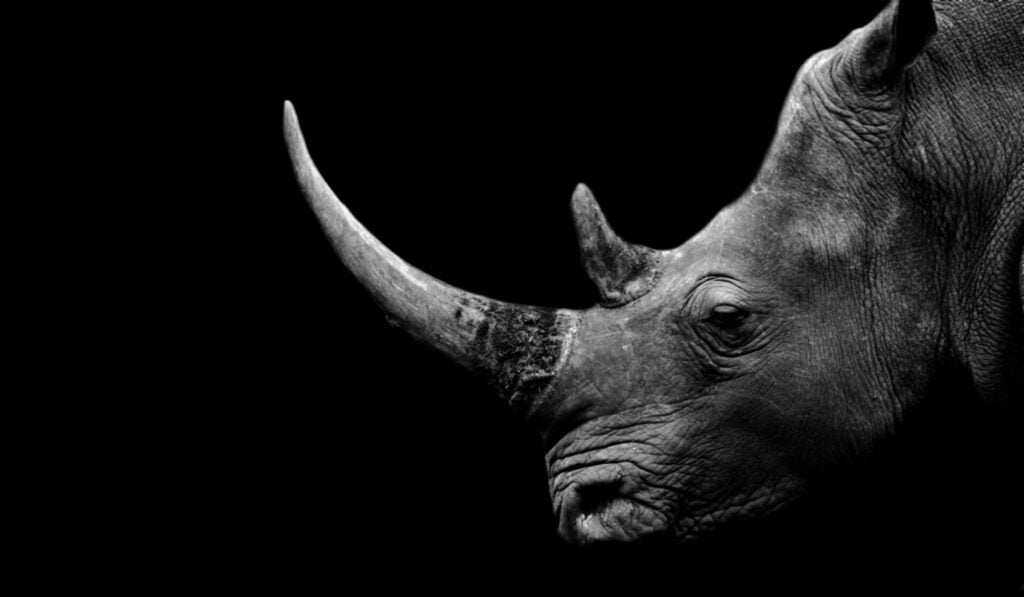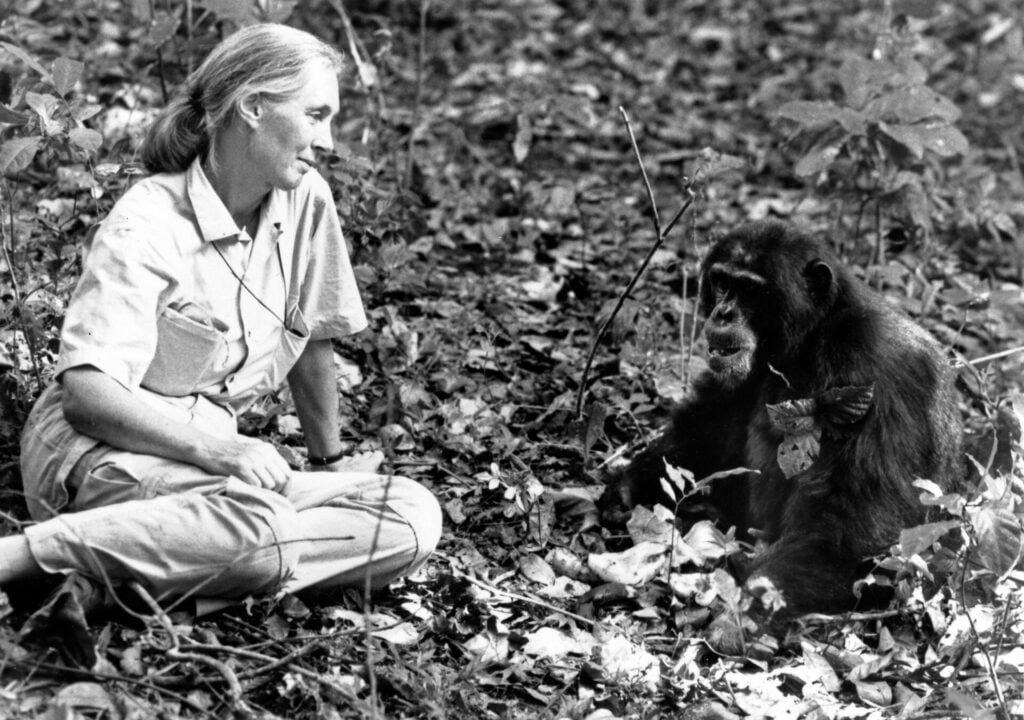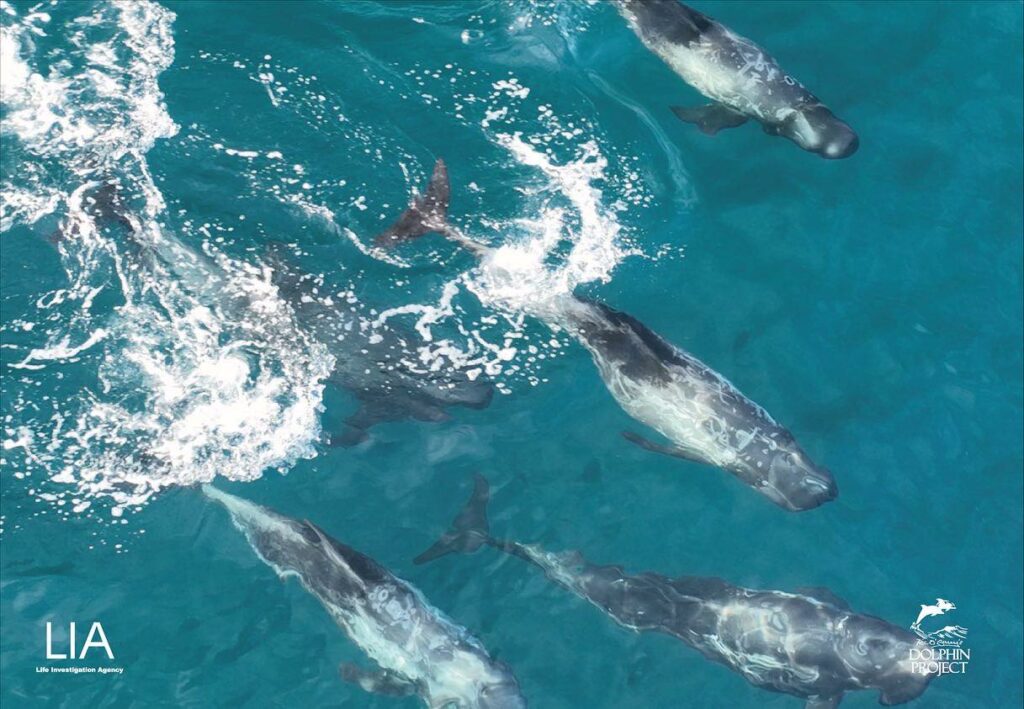Today is World Ranger Day. It is an important day for recognising and celebrating the work of rangers, men and women, working tirelessly to protect wildlife and wild spaces. Rangers are the last line of defence. They are out there day and night patrolling vast wilderness areas, monitoring wildlife, seizing snares, working with communities and often arresting poachers.
Over the past decade, I’ve earned the rare privilege of patrolling on the front line with multiple ranger teams across Africa, including in South Africa, Zimbabwe, Kenya and Uganda. Some teams are armed with pepper spray and handcuffs, others with AK47s, but all are making huge strides forward for wildlife conservation. I’ve seen first-hand how rangers are changing lives, uplifting communities and making real impact.
On one occasion, I was patrolling with a ranger team (I’m not naming them or their precise location for security reasons) in a National Park in Zimbabwe, and what started as a ranger recce quickly turned into an ambush on poachers. We had entered an area of the park that hadn’t had any ranger presence in over 20 years; the landscape looked different to other areas of the park I had visited. The trees had died, and it was reminiscent of a graveyard. The energy felt like it had literally been sucked out of the place and out of us, too.
Rangers With Rifles
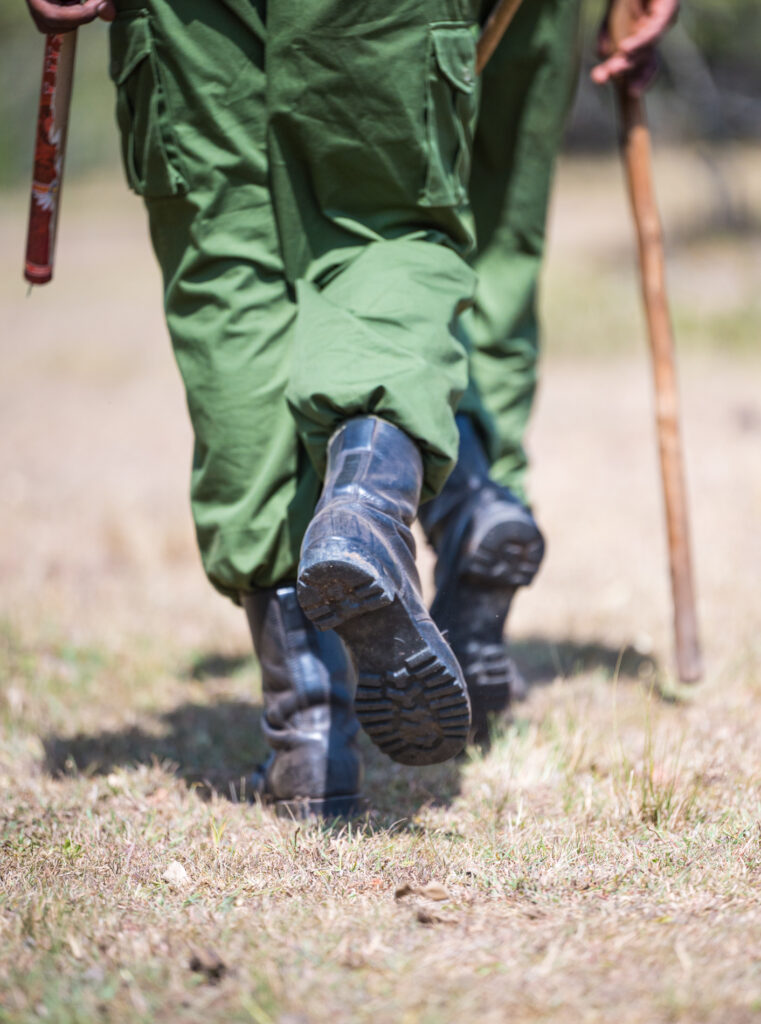
The rangers loaded up their rifles as we ventured into unknown territory. One of the rangers stayed behind to protect the vehicle. The original mission was to show me clay pots reported to be thousands of years old, but as soon as we hit the trail, we picked up poachers’ spoor (tracks).
As we followed their tracks, we discovered fresh campfire ruminants and discarded snares (a fine loop of wire intended to trap and kill animals at will). We were bang in the middle of a poacher’s camp. Gulp. It’s unusual to see such brazen behaviour from poachers, making campfires in the open, with no protection from the undergrowth and no attempt to disguise their presence – a clear sign they didn’t feel threatened and had become comfortable in these surroundings.
We followed the human spoor and soon were hot on the poachers’ heels. It was intense, not knowing what and who we were dealing with. Who knew what had gone on in those last 20 years?
‘My heart was thumping in my chest. I’m sure the Rangers felt an added responsibility having an ‘outsider’ involved in this ambush. What if it turned into an indiscriminate shoot-out?’
Clearly, these rangers were cool, calm professionals, skilled in their work, with hawk-like eyes and razor-sharp instincts to read the situation. Their laughing and jokey demeanour I’d seen just minutes before was now laser focused. Their experience, skills and knowledge kicked into action instantaneously. The pace quickened. Unarmed, and following close behind, adrenaline started pumping through my body. My mind was darting around: ‘What are we going to find?’, ‘Will they be armed?’.
We could hear cowbells and voices. We crouched down behind some thorny undergrowth and set up an ambush. The rangers were communicating with each other with hand signals. The lead ranger moved quickly, staying low, while the ranger beside me covered him with his rifle. My heart was thumping in my chest. I’m sure the Rangers felt an added responsibility having an ‘outsider’ involved in this ambush. What if it turned into an indiscriminate shoot-out?
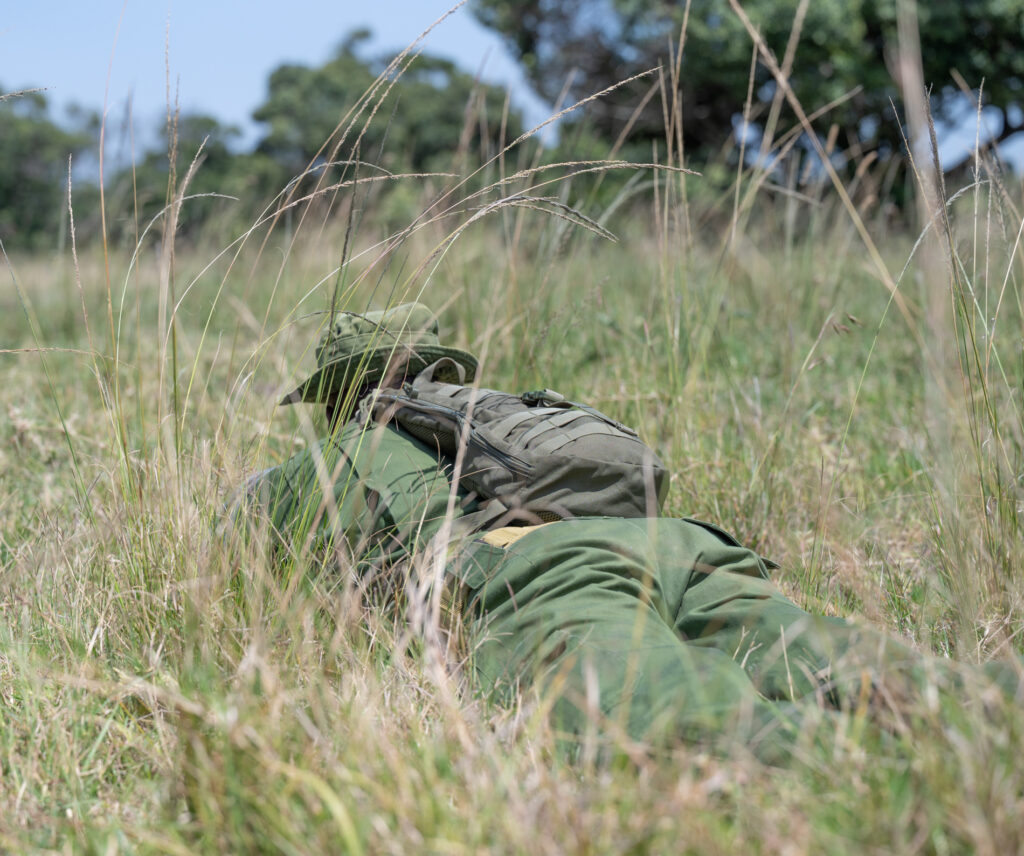
We moved to where the lead ranger was, trying not to make a sound as the voices we could hear grew louder. I was instructed, with a flat palm hand signal, to lie down on the dusty, arid ground. My mind was racing, trying to process what was happening in this potentially volatile situation. Was I about to be shot?
The lead ranger advanced toward the voices, closely followed by the other rangers. I stayed still until instructed to move. To my horror, the voices turned out to be those of children armed with slingshots. One child ran away. The rangers later explained that their fathers had run off and abandoned them – allegedly a not uncommon occurrence in these situations.
‘A team of poachers was out in the national park hunting big game, heavily armed with spears and knobkerries – a form of club’
The children’s pockets were full of small birds they had killed earlier. They also had hunting dogs with them and many cows. The rangers ceased their slingshots. I cannot imagine what was going through their minds, as they most likely had never seen rangers before, and then to see a white (slightly dishevelled) female step out from the undergrowth.
The rangers asked the two boys what they were doing there. They said they were tending to their cattle. After some questioning, the boys told the rangers that a team of poachers was out in the national park hunting big game, heavily armed with spears and knobkerries (a form of club).
I glanced over at these boys when they weren’t looking. At a guess, they were around eight and 11 years old. The oldest boy wore a faded, ripped, red sleeveless down jacket (despite the sweltering heat) with some down lining hanging out. His skin was heavily scratched from the undergrowth, and his feet were bare.
You might have expected them to exchange confused or worried glances, but they didn’t look at each other, not even once. They looked straight ahead and didn’t display any usual signs of fear. Their hunting dogs lay next to them in the beating heat of the day. They were rake thin and in poor condition, much like the children. The rangers continued to talk to the boys calmly and controlled. They said their fathers would not let them go to school.
The rangers instructed one of the boys to go and find the fathers, who, after abandoning them, were most likely hiding nearby. The rangers wanted to speak with them. One of the boys ran into the bush and disappeared up a nearby hill. I watched him intently through my binoculars to see if more people were hiding in the bushes. I saw some men scurry off. The cows grazed nearby, with bells chiming around their necks.
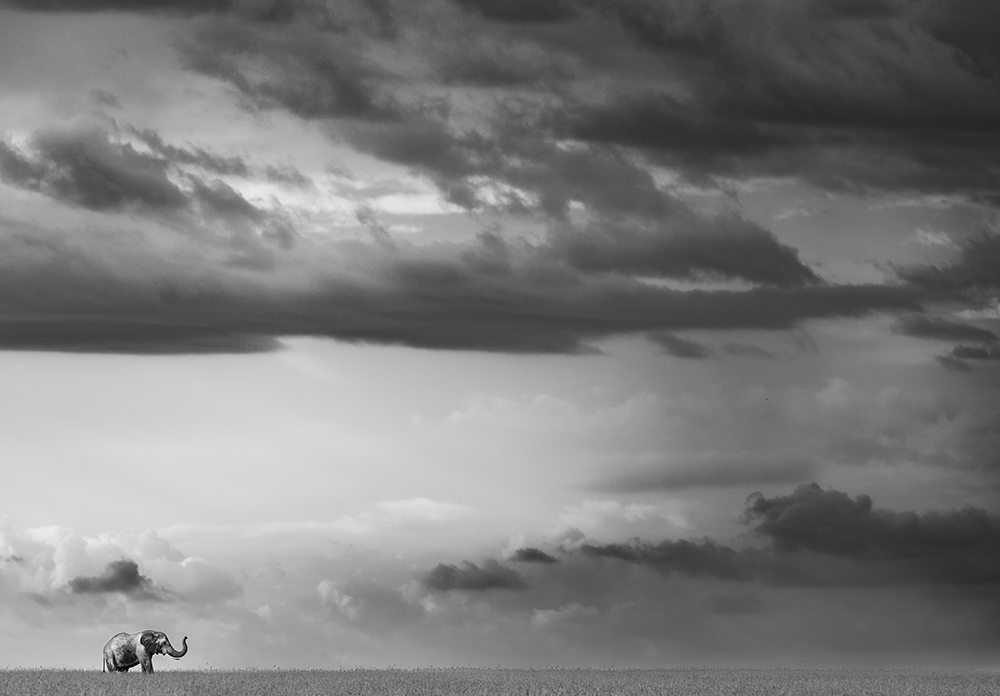
We waited with the other boy for more than 30 minutes. Nothing happened. No-one came. The rangers told the boy they would shoot one of the hunting dogs as a warning to his family that they meant business. The boy calmly pointed at the dog asleep by the tree and said in Shona language: ‘This one bites. Take him.’ The rangers later told me that hunting dogs are fierce killing machines and can tear animals limb to limb when in action.
The sound of that one gunshot reverberated across the landscape in a chilling but defining way. For all anyone knew, one of the children had just been shot. Still, no one came.
The rangers told the boys they would return the following day, and they wanted the cows, dogs and humans to move out of the national park. Little did the rangers know, at that time, that this incident was just the start of unravelling the activities of a highly sophisticated poaching syndicate that had had free rein in this area for a very long time.
Everyday Ambush
This ambush was just one day in the life of a ranger. The challenging work of rangers is paramount right now. They are away from their families for long periods, often without the resources to carry out their vital work safely and efficiently.
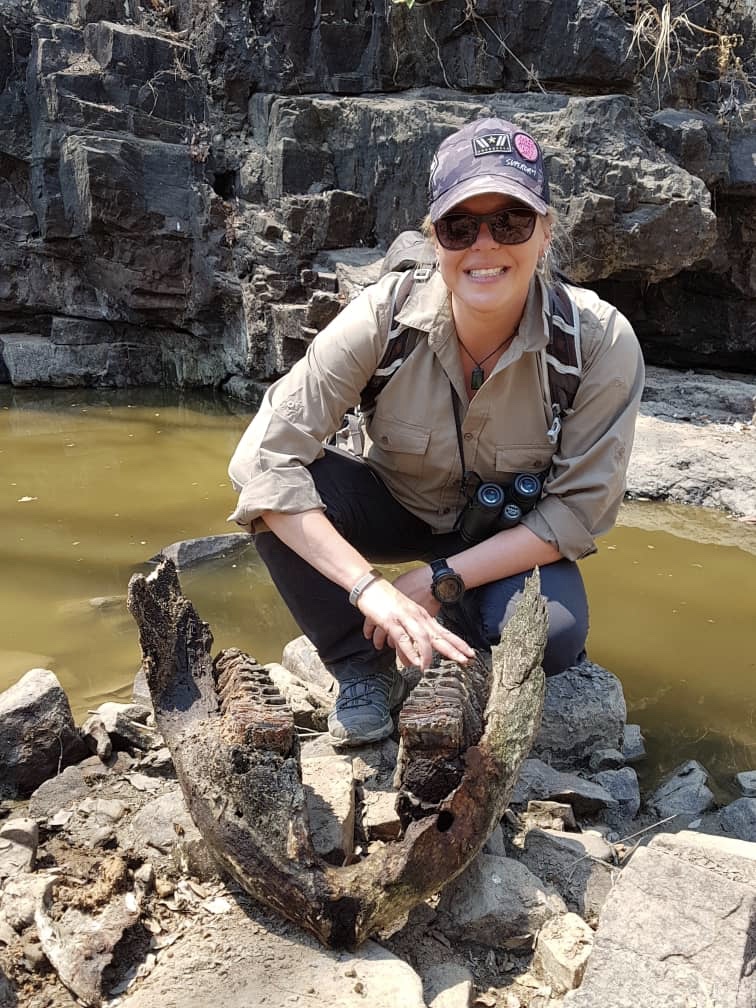
The pandemic crippled tourism and funding for conservation projects globally. The lack of tourists visiting National Parks led to many rangers losing their jobs or having significant salary cuts. The knock-on effect was immense; for example, one African ranger may support up to 16 family members. Additionally, reduced vigilance in tourist hotspots left wildlife even more vulnerable to poaching.
At, How Many Elephants (a UK-registered charity), Holly invites strategic partnerships to continue strengthening our support of rangers. There are many ways you can get involved with How Many Elephants, from volunteering, to fundraising, to donating. For updates, you can follow @howmanyelephants on Instagram and Facebook.
To all the rangers, I salute you all.








